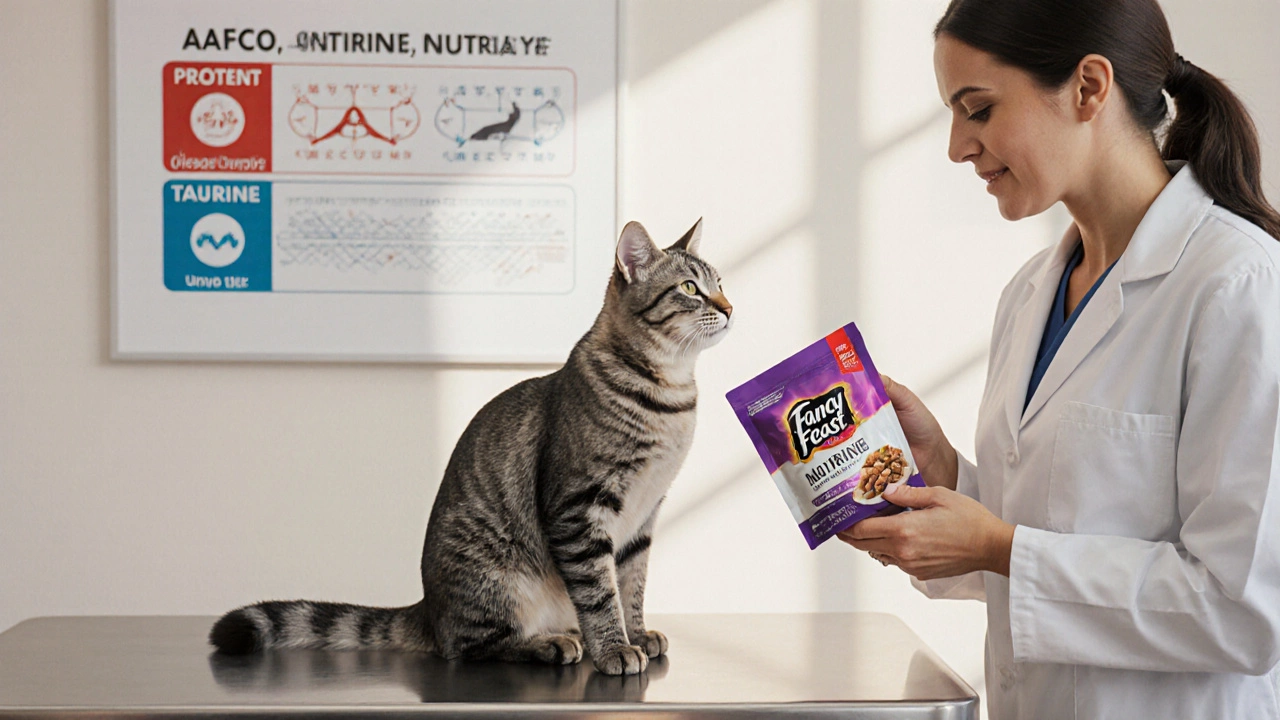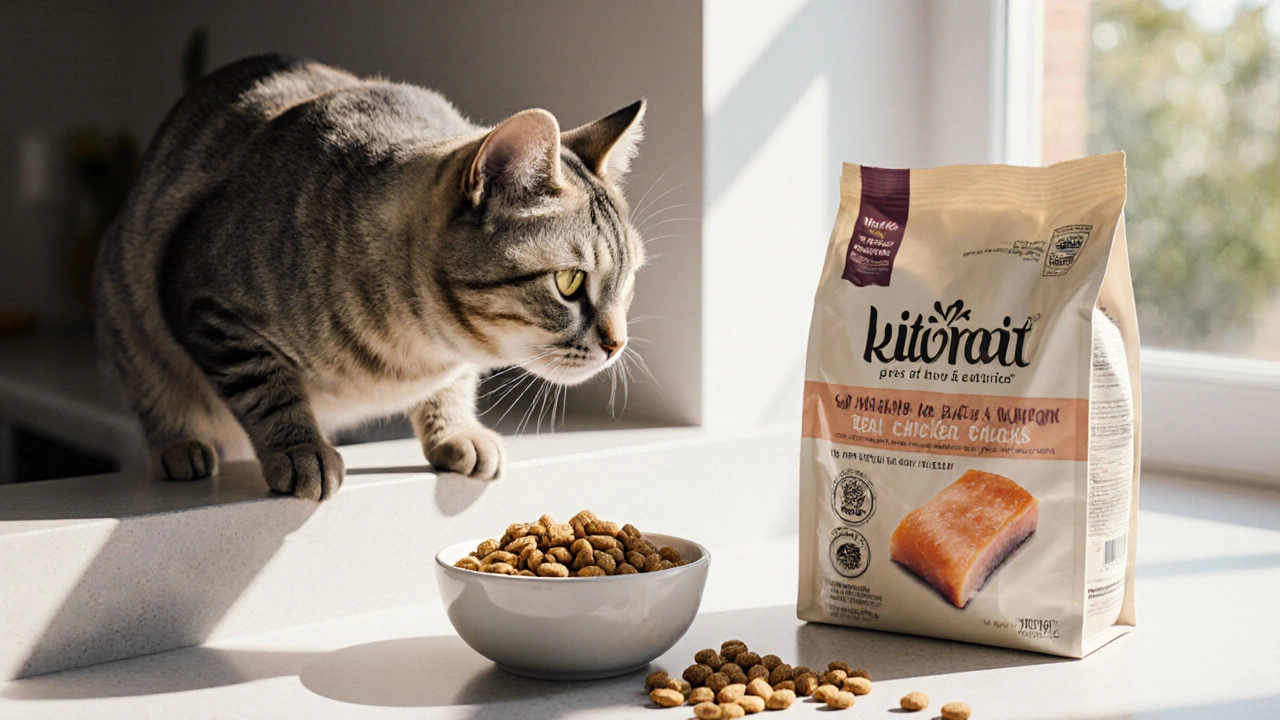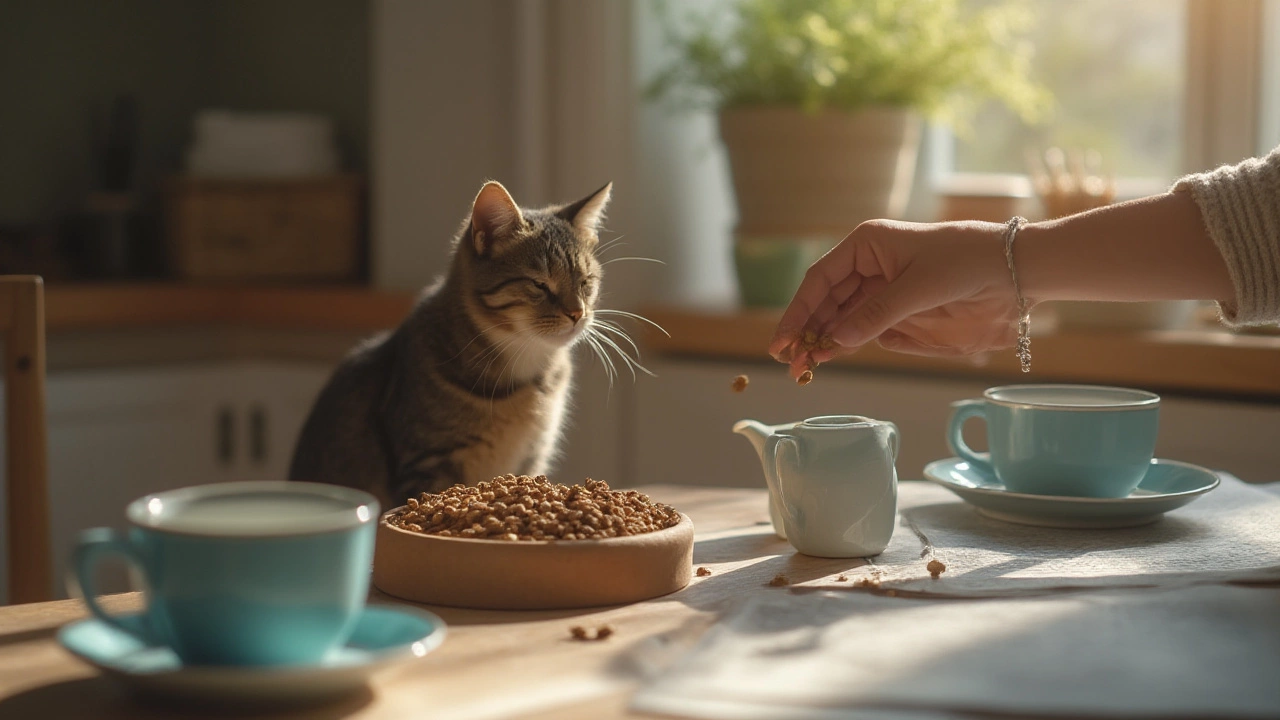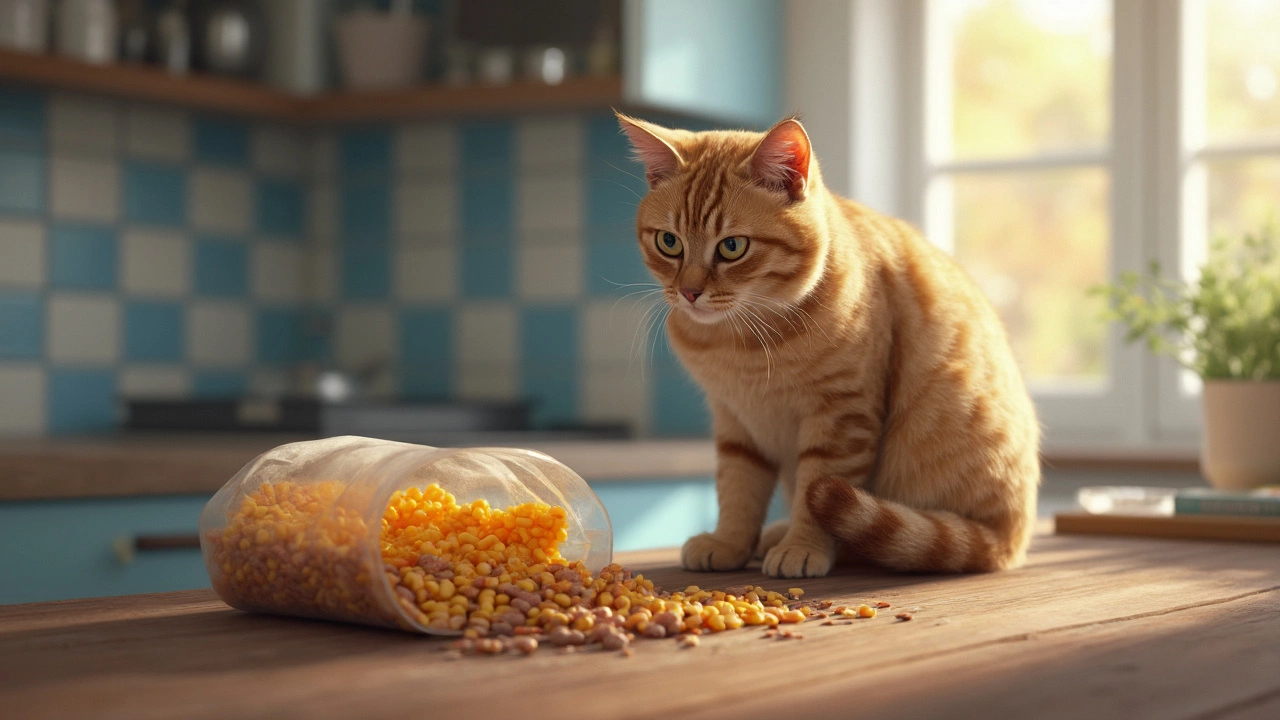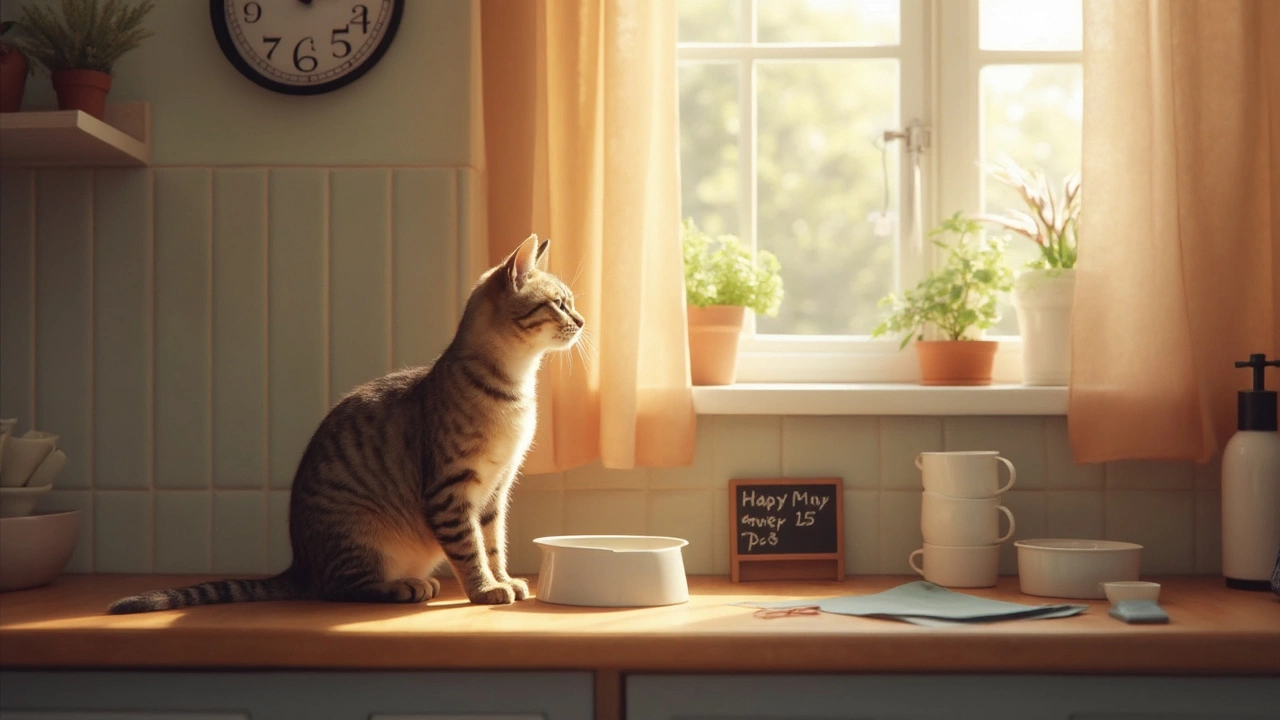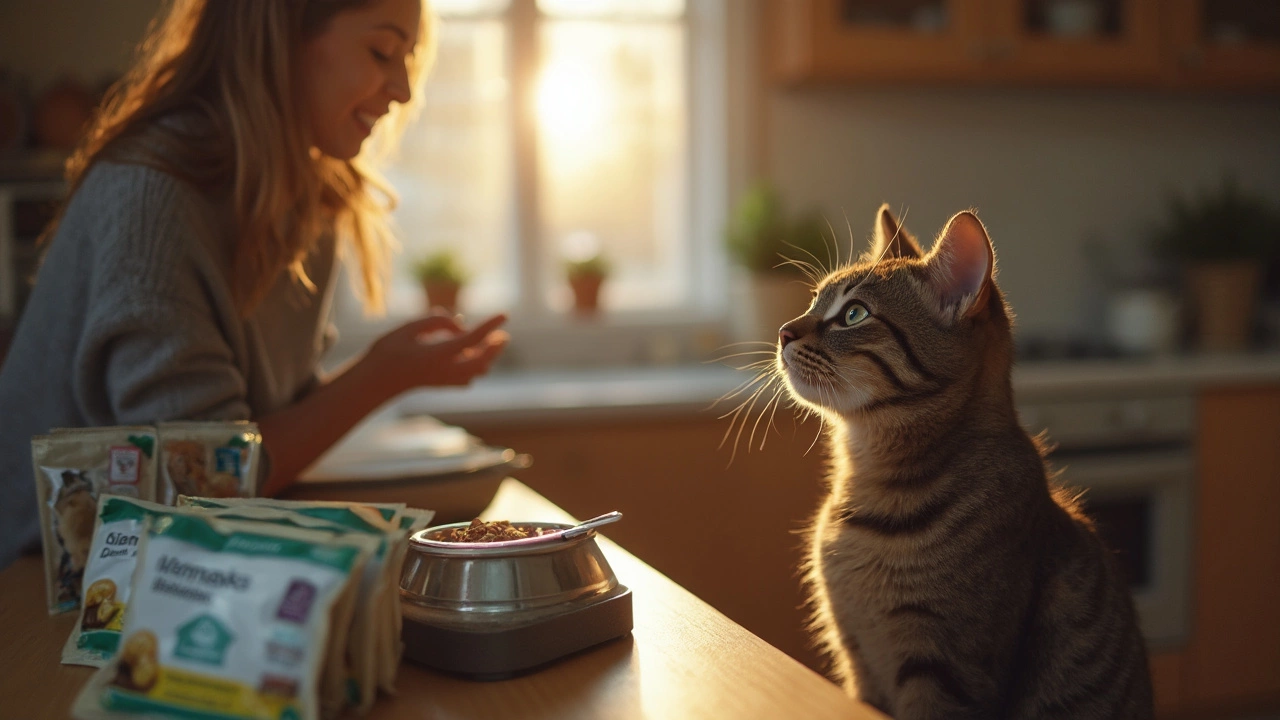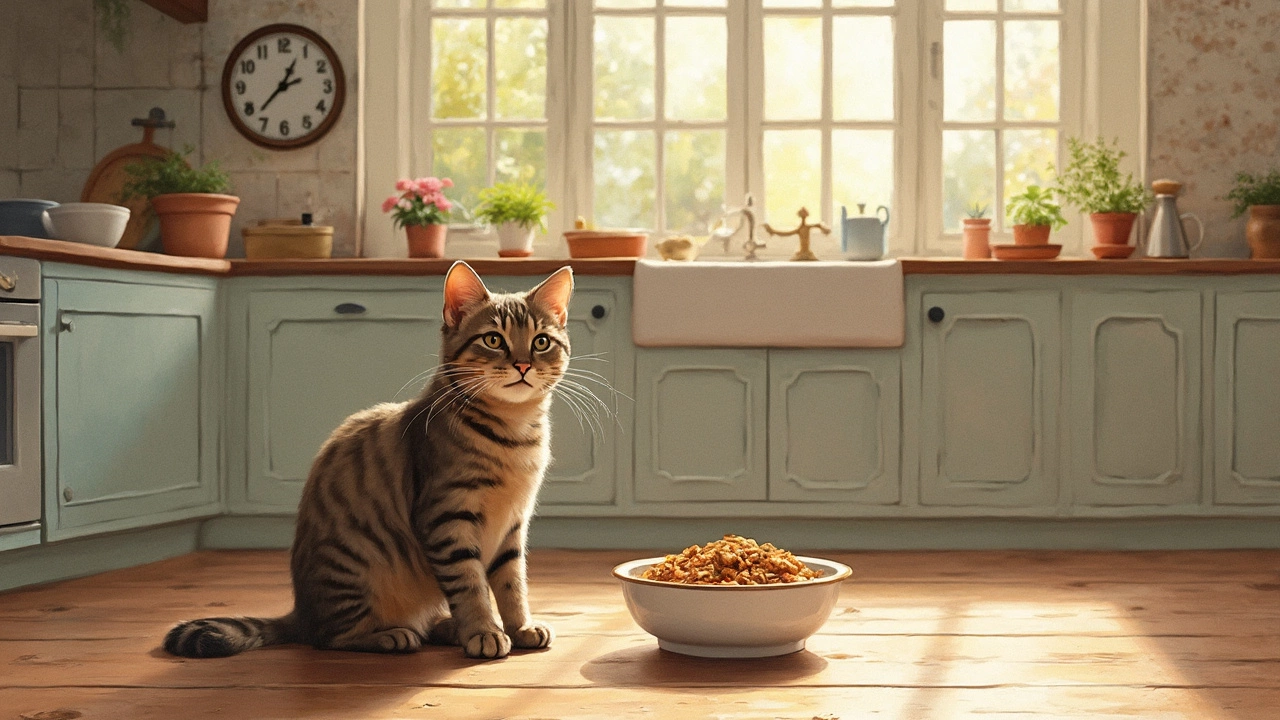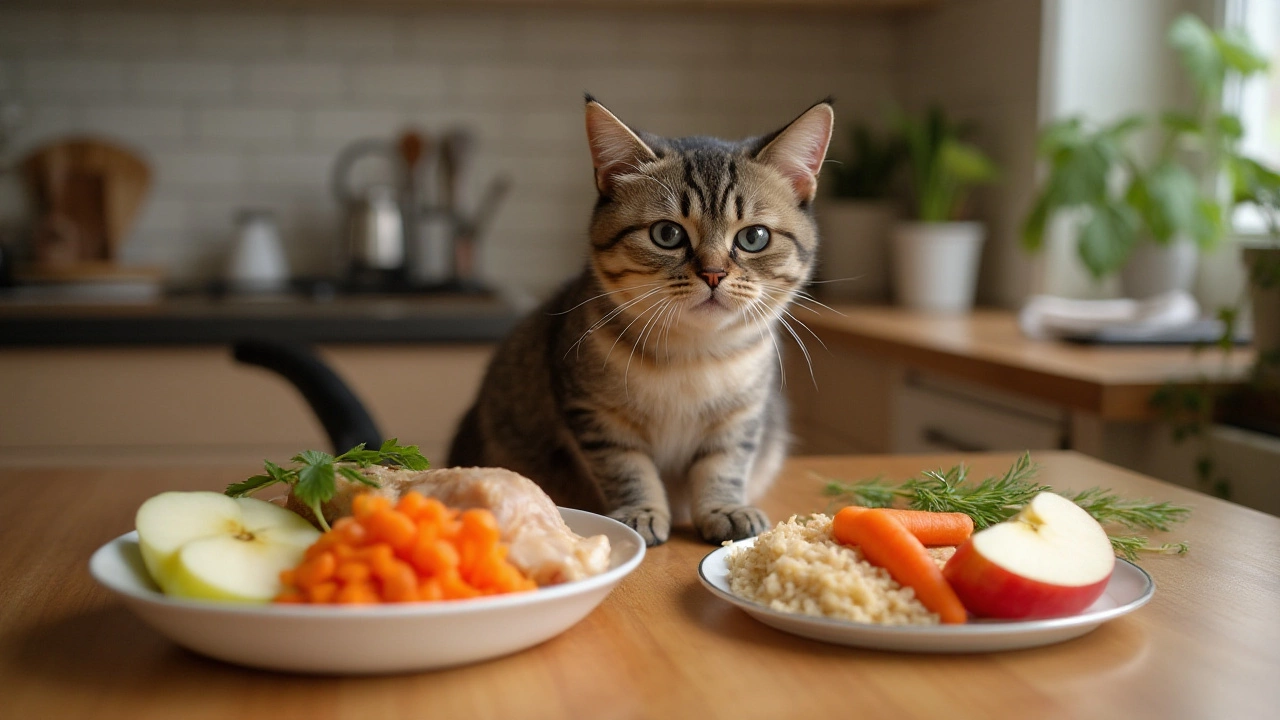Cat Nutrition: Simple Steps to a Healthier Feline
If you want your cat to feel great and live long, the food you give is the biggest factor. Cats are obligate carnivores, which means they need meat to thrive. Forget fancy buzzwords – focus on protein, moisture, and the right balance of vitamins. Below you’ll find straight‑forward advice you can use today.
What Makes a Good Cat Food?
First, check the ingredient list. The first three items should be real meat sources – chicken, turkey, beef, or fish. Anything that sounds like a grain filler (corn, wheat, soy) belongs at the back, if it appears at all. Cats don’t need carbs the way dogs do, so a short list of meat, organ meat, and a few added nutrients is ideal.
Second, look at moisture. Wet food typically contains 70‑80% water, which helps prevent urinary problems. If you feed dry kibble, make sure your cat always has fresh water nearby. Some owners add a splash of water or broth to dry meals to boost hydration.
Third, consider the nutrient profile. Essential nutrients for cats include taurine, arachidonic acid, and vitamin A. Reputable brands will list these on the label. If a brand claims “no artificial colors” but skips taurine, it’s a red flag.
Everyday Feeding Tips
Portion size matters. Follow the guidelines on the bag, but adjust for your cat’s age, activity level, and body condition. A quick way to check is to feel the ribs – you should see a thin layer of fat but not a sharp outline.
Feed on a schedule. Cats love routine, so give meals at the same times each day. If you prefer free‑feeding, use a portion‑controlled bowl that limits how much they can take in one sitting.
Limit treats. A few small treats a day are fine, but they shouldn’t replace a balanced meal. Choose treats that list meat as the main ingredient.
Watch for changes. If your cat starts losing weight, begging for food, or developing hairballs, it could be a sign the diet isn’t right. A quick vet visit can rule out health issues and help you tweak the food.
Finally, don’t forget supplements only if a vet recommends them. Most cats get everything they need from a complete commercial diet. Adding extra vitamins or minerals without guidance can do more harm than good.
By sticking to real meat, providing plenty of moisture, and feeding consistently, you give your cat a solid nutritional foundation. No need for complicated recipes – just a few smart choices and a little observation will keep your feline friend purring for years.
- Morgan Ainsworth
- 0 Comments
Why Veterinarians Recommend Fancy Feast Cat Food
Veterinarians back Fancy Feast for its protein, taurine, and moisture levels. Learn the nutritional reasons, compare it with other premium brands, and get feeding tips for healthy cats.
View More- Morgan Ainsworth
- 0 Comments
Can Cats Survive on Dry Food Only? A Complete Guide
Discover if cats can live on dry food only, learn essential nutrients, choose quality kibble, and manage hydration for a healthy feline diet.
View More- Morgan Ainsworth
- 0 Comments
Do Cats Stop Eating When Full? Understanding Cat Feeding Behavior
Get the facts on cat eating habits. Learn if your cat will stop eating when full, the risks of overfeeding, and how to feed your feline for best health.
View More- Morgan Ainsworth
- 0 Comments
Dry Cat Food: What Ingredients Should You Avoid?
Dry cat food might line store shelves, but not every crunchy kibble is great for your cat. Some common ingredients in dry cat food can upset your feline's health in the long run. This article breaks down what’s really inside those bags and what you should keep an eye out for. You’ll get practical tips so you can spot problems before your cat does. If you want your cat to live healthier and longer, start with what goes in their bowl.
View More- Morgan Ainsworth
- 0 Comments
How Many Times a Day Should a Cat Eat? Simple Answers for Healthy Cats
Ever wondered how often your cat actually needs to eat? This article lays out straightforward advice on daily cat meal schedules, the best feeding routines for different ages, tips for keeping your cat at a healthy weight, and what errors to avoid. It also touches on why some cats seem hungrier than others. Get ready to make feeding time less confusing and more beneficial for your favorite feline.
View More- Morgan Ainsworth
- 0 Comments
How Much Wet Food Should a 10 lb Cat Eat Per Day?
Wondering how much wet food to give your 10 lb cat each day? This article cuts through the confusion and gives practical, clear answers. We'll cover the right portions, what to watch out for, and why a one-size-fits-all approach doesn't work for cats. Plus, you'll get smart feeding tips from real-world experience. Keeping your cat healthy has never been easier.
View More- Morgan Ainsworth
- 0 Comments
How Often Should You Feed Your Cat Daily?
Feeding your cat the right amount and at the right times is crucial for their health. Cats are creatures of habit and require consistency in their feeding routines. This article will explore how often you should feed your cat each day, tips for balancing their diet, and the role of your cat's age and lifestyle in determining their feeding schedule.
View More- Morgan Ainsworth
- 0 Comments
Healthy Alternatives to Conventional Cat Food
Cats, with their unique dietary needs, require a sensitive approach when considering alternatives to traditional cat food. This article dives into exploring safe and nutritious human foods that can complement or replace regular cat food without compromising your feline's health. By emphasizing fresh proteins, grains, vegetables, and fruits, we offer guidance on establishing a balanced home menu for your pet. With useful tips and insights, discover how to enrich your cat's diet while ensuring its overall well-being.
View More
